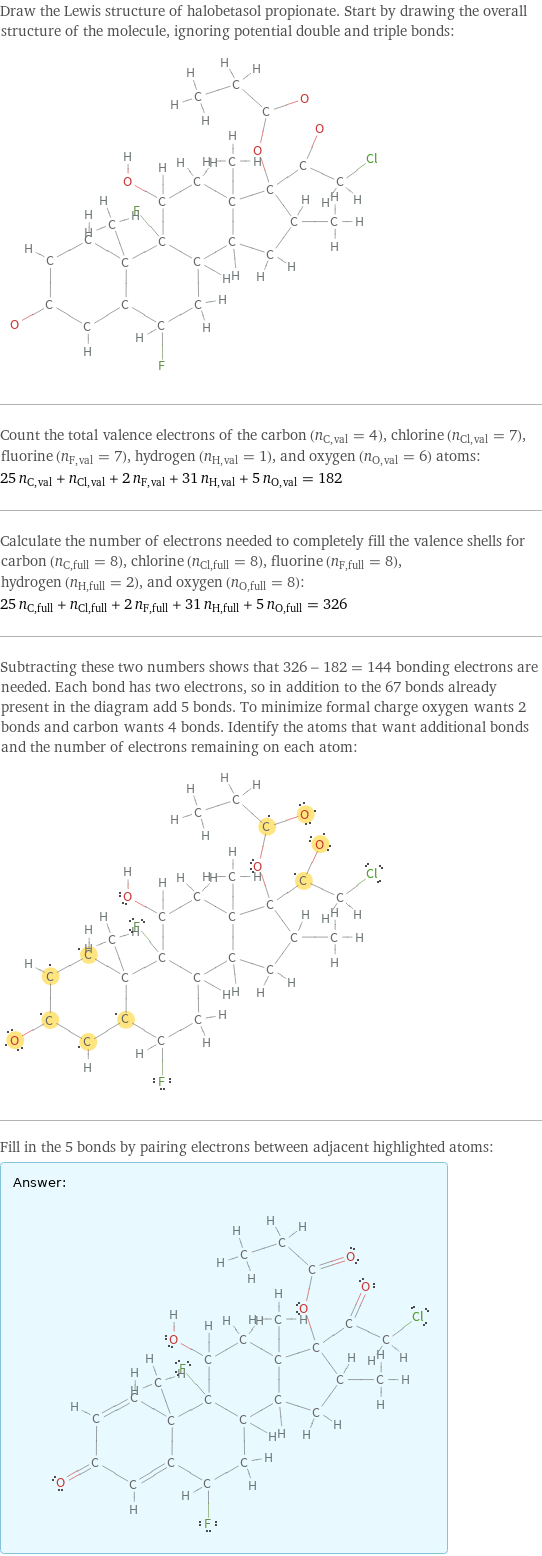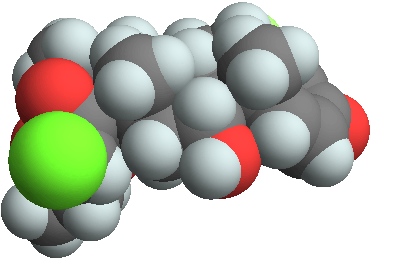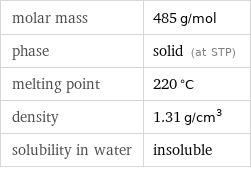Input interpretation

halobetasol propionate
Chemical names and formulas
![formula | C_25H_31ClF_2O_5 name | halobetasol propionate IUPAC name | [(6S, 9S, 16S, 17R)-17-(2-chloroacetyl)-6, 9-difluoro-11-hydroxy-10, 13, 16-trimethyl-3-oxo-6, 7, 8, 11, 12, 14, 15, 16-octahydrocyclopenta[a]phenanthren-17-yl] propanoate alternate names | halobetasol | ulobetasol propionate | ultravate mass fractions | C (carbon) 61.9% | Cl (chlorine) 7.31% | F (fluorine) 7.83% | H (hydrogen) 6.44% | O (oxygen) 16.5%](../image_source/6eacf123c38e1f4c2c9f65eecca91db2.png)
formula | C_25H_31ClF_2O_5 name | halobetasol propionate IUPAC name | [(6S, 9S, 16S, 17R)-17-(2-chloroacetyl)-6, 9-difluoro-11-hydroxy-10, 13, 16-trimethyl-3-oxo-6, 7, 8, 11, 12, 14, 15, 16-octahydrocyclopenta[a]phenanthren-17-yl] propanoate alternate names | halobetasol | ulobetasol propionate | ultravate mass fractions | C (carbon) 61.9% | Cl (chlorine) 7.31% | F (fluorine) 7.83% | H (hydrogen) 6.44% | O (oxygen) 16.5%
Lewis structure

Draw the Lewis structure of halobetasol propionate. Start by drawing the overall structure of the molecule, ignoring potential double and triple bonds: Count the total valence electrons of the carbon (n_C, val = 4), chlorine (n_Cl, val = 7), fluorine (n_F, val = 7), hydrogen (n_H, val = 1), and oxygen (n_O, val = 6) atoms: 25 n_C, val + n_Cl, val + 2 n_F, val + 31 n_H, val + 5 n_O, val = 182 Calculate the number of electrons needed to completely fill the valence shells for carbon (n_C, full = 8), chlorine (n_Cl, full = 8), fluorine (n_F, full = 8), hydrogen (n_H, full = 2), and oxygen (n_O, full = 8): 25 n_C, full + n_Cl, full + 2 n_F, full + 31 n_H, full + 5 n_O, full = 326 Subtracting these two numbers shows that 326 - 182 = 144 bonding electrons are needed. Each bond has two electrons, so in addition to the 67 bonds already present in the diagram add 5 bonds. To minimize formal charge oxygen wants 2 bonds and carbon wants 4 bonds. Identify the atoms that want additional bonds and the number of electrons remaining on each atom: Fill in the 5 bonds by pairing electrons between adjacent highlighted atoms: Answer: | |
3D structure

3D structure
Basic properties

molar mass | 485 g/mol phase | solid (at STP) melting point | 220 °C density | 1.31 g/cm^3 solubility in water | insoluble
Units

Hydrophobicity and permeability properties

experimental LogP hydrophobicity | 2.9 predicted LogP hydrophobicity | 3.81 predicted LogS | -4.81
Basic drug properties

approval status | approved | small molecule drug categories | anti-inflammatory agent | vasoconstrictor agent dosage forms | topical: cream | topical: ointment

brand names | halobetasol | ulobetasol propionate | ultravate
Solid properties (at STP)

density | 1.31 g/cm^3 vapor pressure | 2.1×10^-15 mmHg (at 25 °C)
Units

Chemical identifiers

CAS number | 66852-54-8 PubChem CID number | 48175 PubChem SID number | 187307 SMILES identifier | CCC(=O)OC1(C(CC2C1(CC(C3(C2CC(C4=CC(=O)C=CC43C)F)F)O)C)C)C(=O)CCl InChI identifier | InChI=1/C25H31ClF2O5/c1-5-21(32)33-25(20(31)12-26)13(2)8-15-16-10-18(27)17-9-14(29)6-7-22(17, 3)24(16, 28)19(30)11-23(15, 25)4/h6-7, 9, 13, 15-16, 18-19, 30H, 5, 8, 10-12H2, 1-4H3/t13-, 15u, 16u, 18-, 19?, 22u, 23u, 24-, 25-/m0/s1 InChI key | BDSYKGHYMJNPAB-YKQIDFLYBE RTECS number | TU3723500
NFPA label

NFPA label

NFPA health rating | 1 NFPA fire rating | 1 NFPA reactivity rating | 0